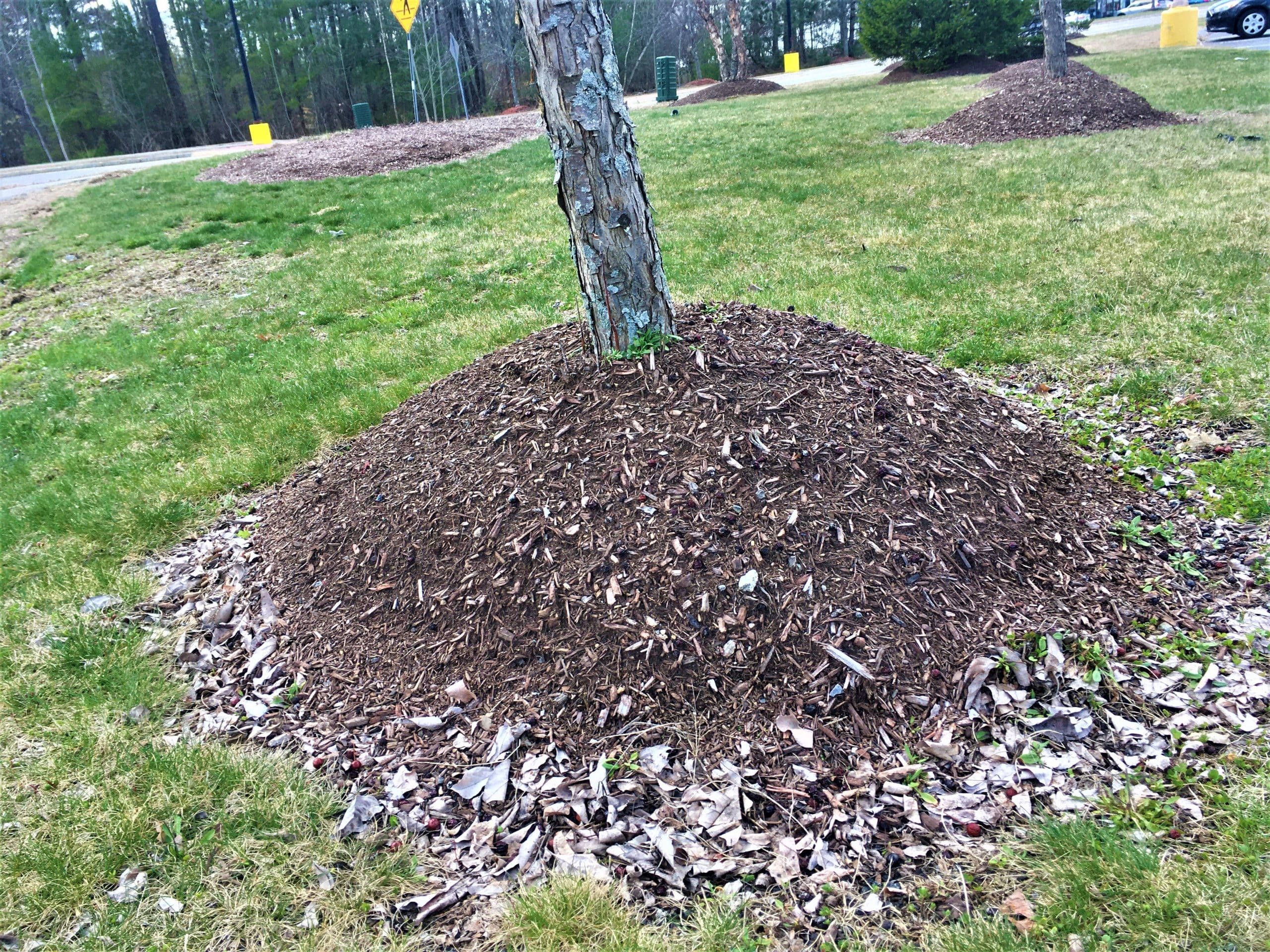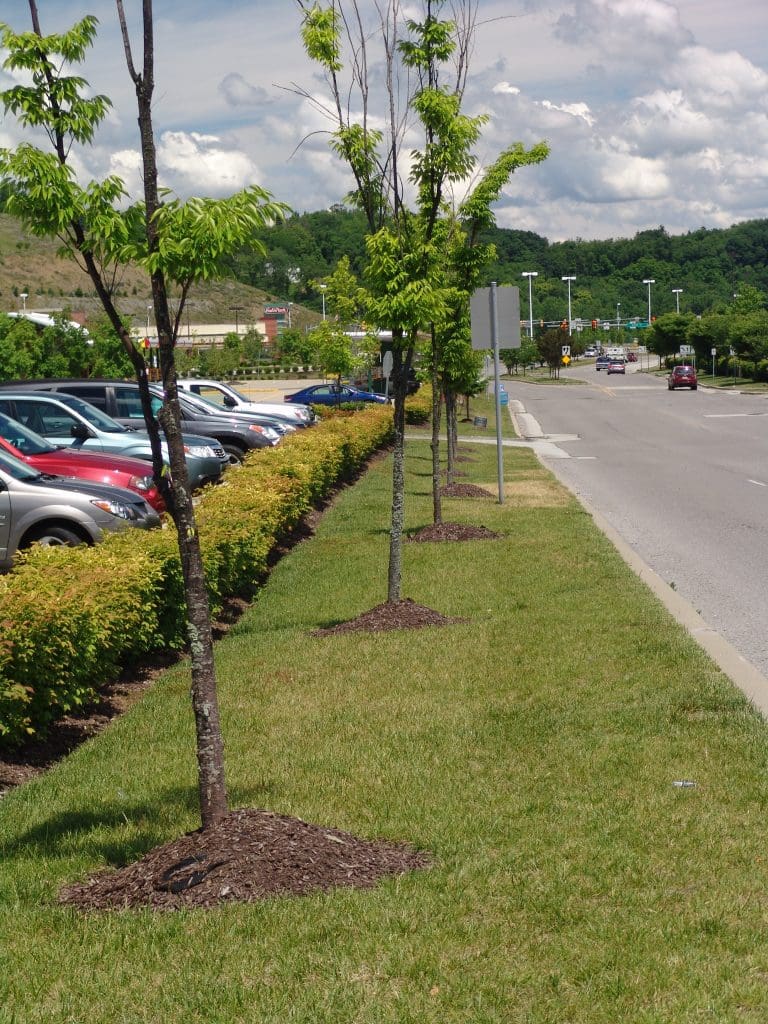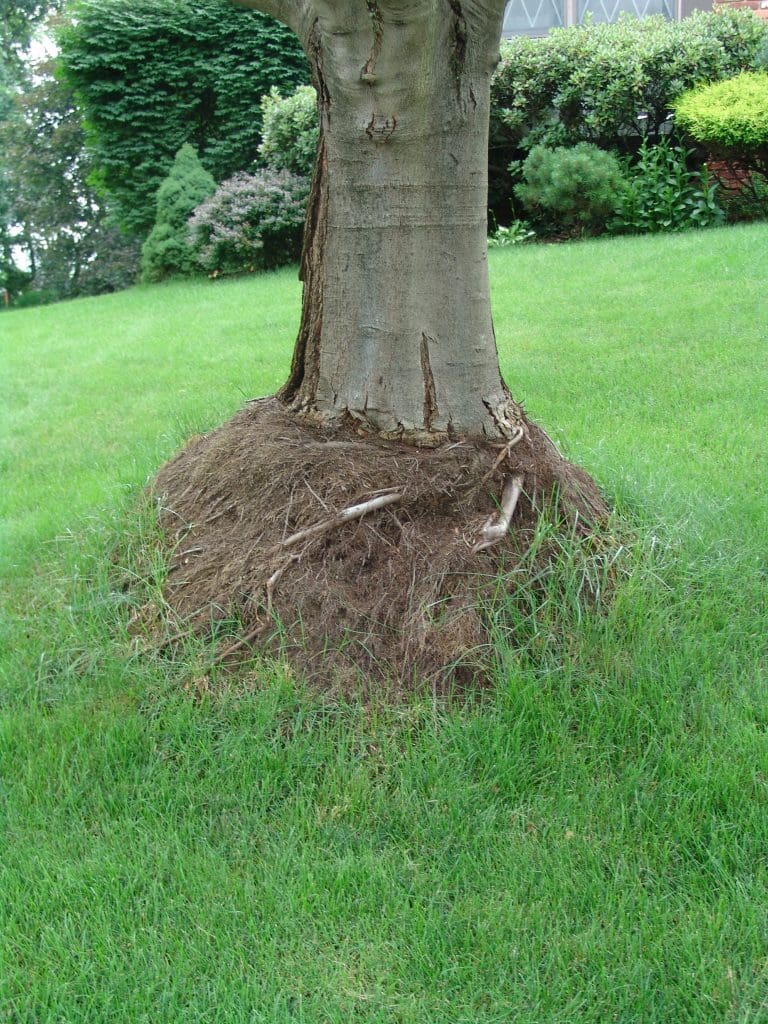
You’ve probably seen them plenty of times. Mulch volcanos erupting throughout spring as property owners want to freshen up their landscapes.
Yet despite their frequency, mulch volcanos are very harmful to trees. These massive piles of mulch around the base of trees can result in disease, decay, root rot and the eventual death of the tree.
While mulching does help with water retention, soil insulation and weed prevention, too much of a good thing can still end up being bad.
Why Mulch Volcanos Are Prevalent?
So, if overmulching is bad, why is it still so common in landscapes? Greg Jordan, University of New Hampshire Extension forester & arborist, argues that many professionals and homeowners are doing it right when it comes to mulching. However, there is still plenty of poor-quality mulching work out there that points to a lack of education.
“Some of the fault falls to a small number landscaping contractors,” Jordan says. “Some don’t do a good job of educating their employees on proper mulching practice. Others don’t do a great job of educating their clients – especially commercial or “big box” customers. A lot of commercial customers have it in their mind that mulching is a task that must be done every year no matter what.”
Jordan says landscape contractors need to be educating their clients on proper mulching. They should not just dump new piles of mulch without raking out the old mulch.
“In the end, landscaping professionals need to be responsible for providing proper guidance to their clients and discussing hidden costs – like the need to replace expensive large caliper trees – that are the result of poor mulching practices,” he says.

Sandy Feather, an extension educator with Penn State, agrees that a lack of trained employees can result in mulch volcanos being more common. They’re also more likely when workers are trying to get tasks accomplished quickly.
“Dumping part of a wheelbarrow full of mulch around a tree and moving on to the next is where I think mulch volcanos come from in the first place,” Feather says. “Sometimes, you can tell which side of the tree the wheelbarrow was dumped from because the mulch is deeper on that side! I understand that time is money and that it is quicker to mulch this way, but properly bid jobs should include time for tasks to be done according to best practices.”
Another factor that keeps mulch volcanos from being eradicated is due to people copying one another.
“I think another issue is that landscapers see other professionals mulch this way and think it is the correct way to mulch, even though it definitely is not,” Feather says. “Certainly, homeowners copy the landscapers who volcano mulch, too. It is a vicious cycle.”
Others may choose to continue to create mulch volcanos because the repercussions are not seen immediately. Too much mulch against the tree bark can cause it to break down and it can also prevent the roots from getting sufficient oxygen. Over time, this will cause the tree to be vulnerable to insect infestations, various pathogens, and root girdling.
Mulch Volcano Remediation
Thankfully, because it takes time for mulch volcanos to inflict damage, there is also time to save overmulched trees. However, you need to act quickly as waiting too long can cause the tree to decline beyond the point of saving.

“The remediation starts with physical removal of the excess mulch,” Feather says. “How you remove it depends on the situation, how long it has been volcano mulched, and how many girdling roots have formed. Some of it may be able to be removed with a rake, but an air spade is usually involved to expose the girdling roots without damaging the trunk, root flare, and structural roots.”
Jordan suggests using an air wand to expose the tree’s root flare.
“If the tree has been overmulched for a while, you will find secondary roots growing up out of the ground and into the mulch,” Jordan says. “These secondary roots are the tree’s response to lack of oxygen. This tells you that the primary root system has been suffocating under the pile of mulch.”
These secondary roots can dry out quickly and may be exposed to temperature extremes. They can also grow towards the stem and strangle the tree. These girdling roots should be cut out by hand little by little.
“I have seen lots of trees that by rights really should be healthy, especially maples, but are in serious decline because of girdling roots,” Jordan says. “Once the secondary roots are pruned, the tree can be re-mulched – properly – and it will have a good chance of recovery. Some extra watering to help the tree recover is a good choice, too.”
When To Start Fresh
One major question is when has a tree been overmulched for too long. There’s no hard and fast rule as to how long is too long.
Smaller caliper trees can be killed off by borers in just a few years of being overmulched, while other trees could last decades with mulch volcanos.
“Trees are tough and will struggle along for years under all kinds of adverse conditions,” Jordan says. “Just because a tree is surviving does not mean that it looks nice in the landscape or that it has good long-term prospects as a landscape planting.”
Jordan says some signs that indicate if a tree is too far gone include if one-third of the crown has die-back, if there is rot at the base or if large areas of bark missing. Also if there are signs of fungal infection or large girdling roots that can’t be pruned practically, the tree is probably beyond help.
“If the girdling roots have severely compromised the tree’s ability to transport water and nutrients into the canopy and more than one-third of the canopy shows dieback, it is time to consider replacement,” Feather agrees.
Point this failing tree out to the customer and advise removing the tree and starting over.
“Get rid of the excess mulch and care for the new tree properly,” Jordan says. “That means proper planting, watering, and mulching. When it comes to mulching, I go with the ‘3 x 3 Rule.’ No more than a three-inch layer of mulch around the tree and maintain at least three inches of space between the stem and the mulch.”
Feather adds tree should be planted properly with the root flare at ground level and the mulch should extend out to the drip line.
“When it comes to tree care, I go with a saying from one of my favorite television personalities – Mike Holmes,” Jordan says. “He says, ‘If you are going to do the job, do it right. The first time.’ That gives trees the best chance to thrive in landscapes.”

